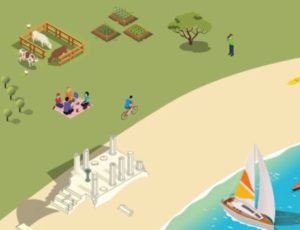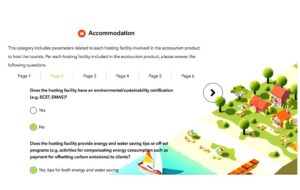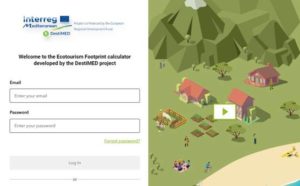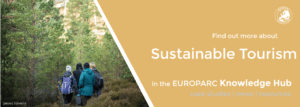Measure the Ecological Footprint of your Ecotourism Itineraries
Source: Global Footprint Network
Does your Protected Area offer ecotourism itineraries and sustainable destinations? Find out what is their Ecological Footprint with DestiMED’s Calculator. The Calculator enables to measure and monitor the Ecological Footprint, based on the 4 main aspects of an ecotourism package, i.e. accommodation, food & drinks, mobility & transfer activities and services.
Free online calculator
To help Protected Area managers and tourist operators in creating a proven sustainable experience, the DestiMED project has created this free online calculator to measure the Ecological Footprint of ecotourism itineraries.
Ecotourism is a great tool to promote the unique value of nature and Protected Areas, while creating revenue for local communities.
The calculator was created with the support of the European programme Interreg-MED and addresses mainly Protected Areas of the Mediterranean region. It evaluates 4 main aspects of ecotourism packages:

Source: Global Footprint Network
- Accommodation
- Food and Drinks
- Mobility and Transfer
- Activities and Services
The assessment is conducted annually to help the local ecotourism businesses and public authorities understand and address the impact of their ecotourism products while ensuring their high quality.
What is the Ecological Footprint?
The Ecological Footprint is an indicator and a methodology developed by Global Footprint Network to measure the ecological assets required by a given population to produce the natural resources it consumes, and to absorb its waste, especially carbon emissions.
The DestiMED Project managed to adapt this methodology to ecotourism packages in Protected Areas. Moreover, the tool offers specific information on:
- The Ecological Footprint of the whole ecotourism package (in gha per package)
- The Ecological Footprint per tourist per day (in gha per tourist per day)
How to use the Calculator?
To get started, you will need to register on the platform by creating a new account. All the steps are then explained in an introductory video.
Entering the data
For each ecotourism package, you will be requested to provide the number of days and of participants. In each of the categories (accommodation, food & drinks, mobility & transfer activities & services) the questions will focus on the type of supply and how it is provided.
It is strongly recommended to get in touch with your service providers involved in the package (all the hotels, restaurants, providers of transport and guides/providers for each activity) and to visit them in person to ensure that data is collected as precisely as possible.
Lower your Ecological Footprint
Results from the DestiMED project illustrate that a low Ecological Footprint of tourism can be achieved by:
Staying at small-scale, family-run, local and traditional housing accommodations, preferably with renewable energy sources in place. Although large hotel chains are often very resource efficient because of economies of scale, these small-scale hotels will reduce the accommodation Footprint by as much as 48%, Global Footprint Network found.

Source: DestiMED project
Eating food sourced locally or regionally, offered through the typical Mediterranean diet providing an abundance of vegetables and grains, and less animal protein-based products (non-endangered fish-based products and non-intensive meat based-products).
Buying local and organic food products improves each meal with a tasty Footprint reduction of 5%, Global Footprint Network found. This can really add up over the course of a trip! Considering the quantity of food consumed: light and balanced dishes are favored over lush, bountiful, and never-ending banquets.
Carbon-free activities that allow you to enjoy the slow pace of the natural areas and re-discover the original rhythm of nature.
Traveling “slow” by using alternative and motor-free modes of transportation as much as possible. Walking, as well as using bikes, kayaks, horses, or even public transport, is preferred to carbon-intensive transportation. An electric vehicle will help reduce the Footprint by 40-50%, Global Footprint Network found, and a bike ride means no Footprint at all!
For further enquiries contact carla.danelutti@iucn.org.

